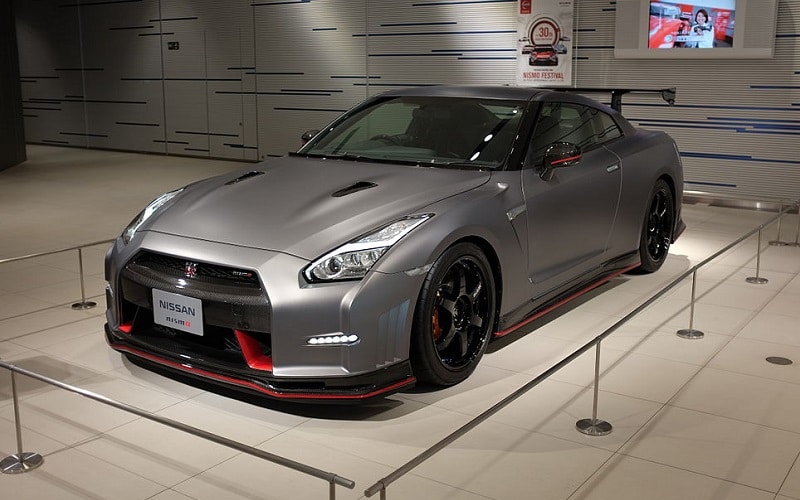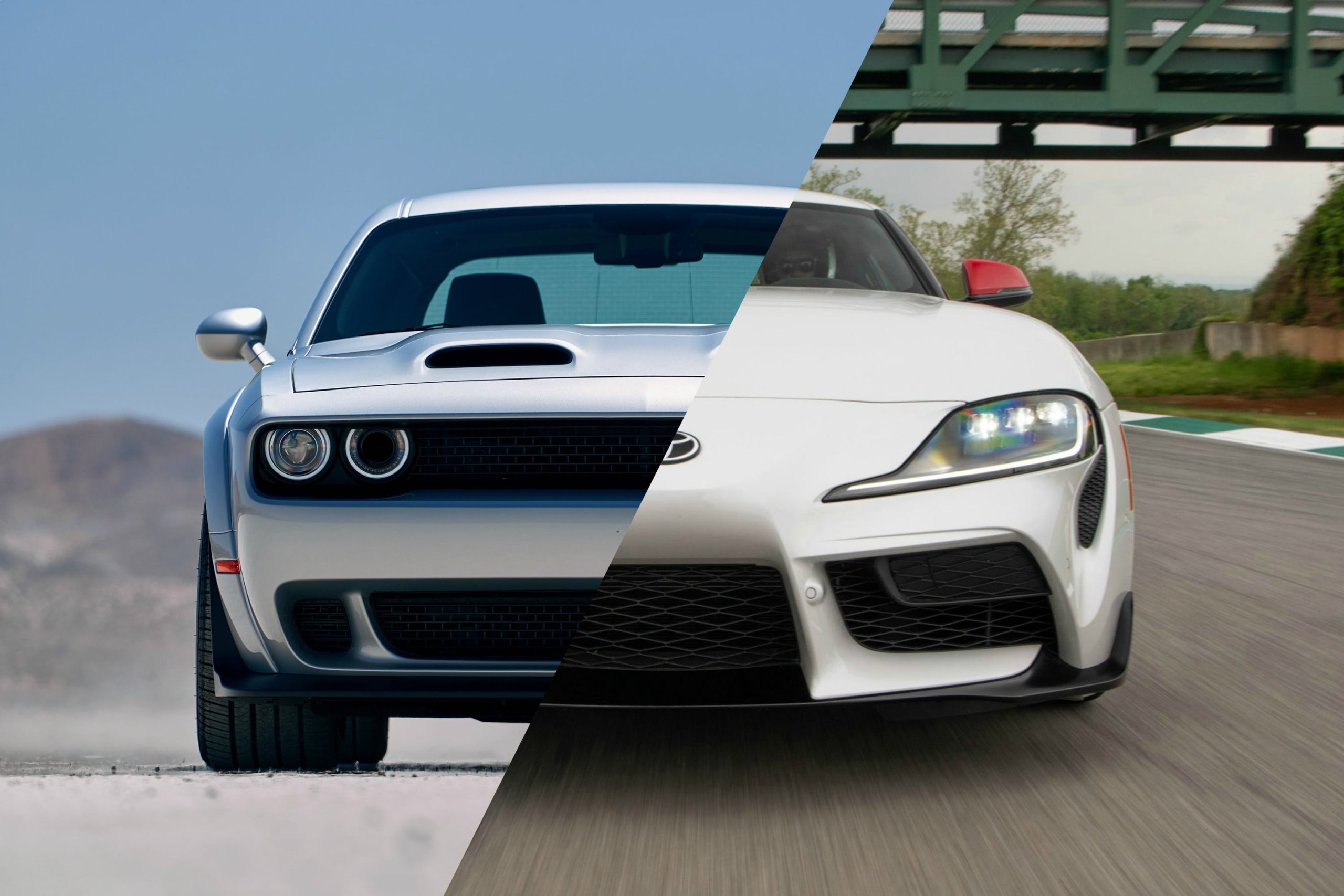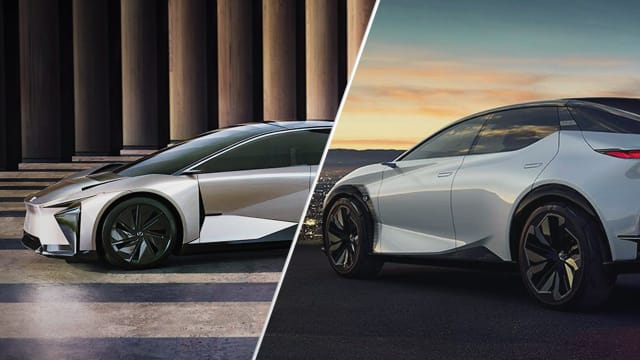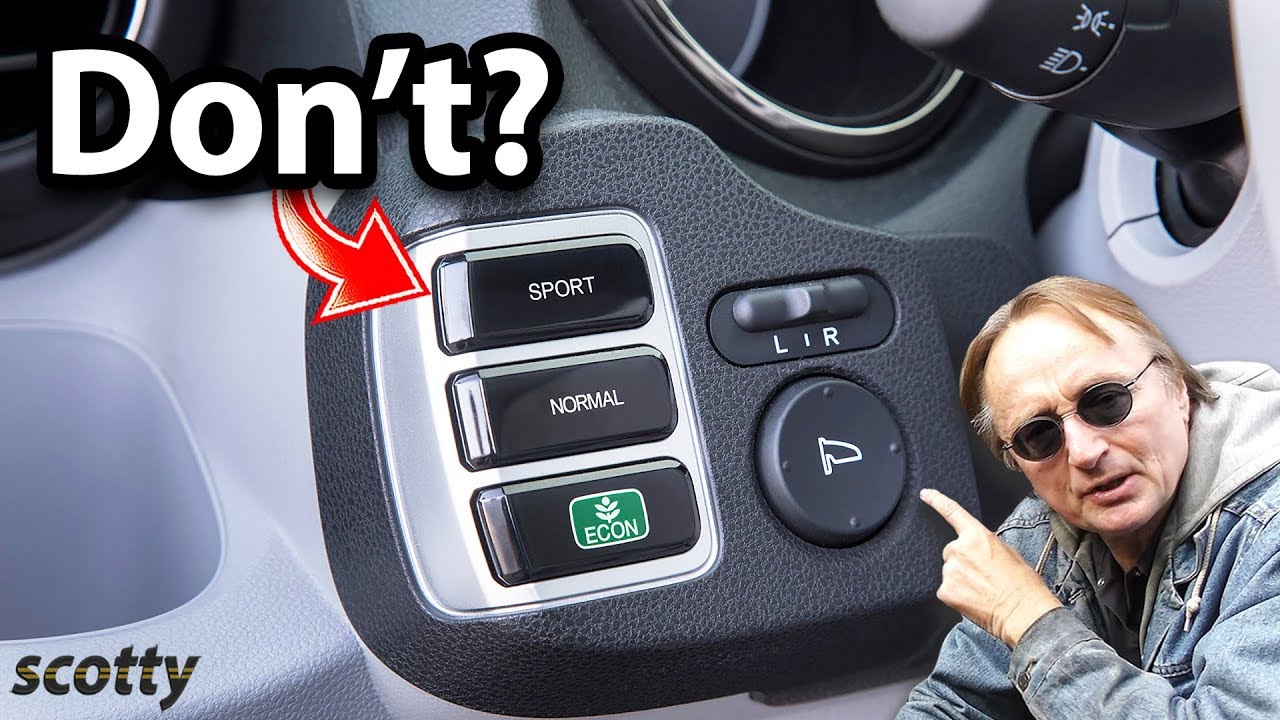Muscle Car Vs Sports Car
Muscle cars embody raw power and straight-line speed, while sports cars prioritize agile handling and performance. The distinction lies in their engineering focus and driving experience.
Muscle cars, American icons, thrived in the 60s and 70s, capturing enthusiasts’ hearts with their V8 engines and bold designs. Built for power, they excel in drag racing, showcasing acceleration and high horsepower. Contrastingly, sports cars offer a more refined approach, with a global pedigree of precision and versatility on varied terrains.
Originating in Europe, sports cars emphasize balance, lighter weight, and agility. Car aficionados often debate the merits of each, but the deciding factor usually hinges on personal preference for speed or maneuverability. These vehicles not only differ in performance but also in cultural significance and design philosophy, making each appealing to different types of drivers and collectors.

Credit: m.youtube.com
Muscle Car Vs Sports Car: Characterizing The Rivals
Welcome to the rumbling world of muscle cars and sports cars, where power and speed define the ride. These fierce rivals have fueled countless debates among car enthusiasts. Exploring their characteristics highlights what sets them apart and ignites the passion of gearheads around the globe. Let’s delve into the distinct traits that make each one unique.
Defining Muscle Cars
Muscle cars roar with raw power. Born in America, they boast big, tough engines. They’re built for straight-line speed, often at affordable prices. Muscles cars are heavy and show off bold designs. Think power at the pedal and you’re in muscle car territory.
- Affordable: Lower cost than many sports cars.
- Powerful V8 Engines: Known for high-performance engines.
- Rear-wheel Drive: Offers a classic driving experience.
- Iconic: Ford Mustang, Chevy Camaro, and Dodge Challenger.
Capturing The Essence Of Sports Cars
Sports cars sparkle with finesse and agility. They weave through curves with ease. Hailing from corners around the world, they prioritize balance and handling. Lighter and sleeker, sports cars often feature advanced technology. They represent speed with grace.
| Feature | Benefit |
|---|---|
| Aerodynamic Design: | Enhances speed and stability. |
| Lightweight Structure: | Improves maneuverability. |
| Advanced Tech: | Boosts performance and safety. |
| Famous Models: | Porsche 911, Mazda MX-5, Ferrari 488. |
Design And Aesthetics: Style Showdown
Welcome to the Design and Aesthetics: Style Showdown where the allure of Muscle Cars and Sports Cars come into the spotlight. It’s more than just speed and power; it’s about the statement they make on the road. Let’s explore their distinct characteristics that set them apart, starting with their external features.
Muscle Car Exterior Features
Muscle cars roar into view with a look that’s both classic and bold. Common features include:
- Long hood – Houses powerful engines
- Broad stance – Offers stability and presence
- Square lines – Exudes a tough, rugged feel
- Chrome accents – Adds a touch of retro glamour
- Bold stripes – Signals race-ready performance
Sports Car Design Language
Sports cars, on the other hand, have a language that speaks to aerodynamics and sophistication. Their key design elements include:
| Feature | Description |
|---|---|
| Sleek lines | Cuts through air, emphasizes speed |
| Low profile | Reduces drag, increases agility |
| Curves | Visual flow, hints at modernity |
| Minimal chrome | Clean look, focuses on performance |
| Large wheels | Supports faster, tighter turns |
Both muscle and sports cars carry an unmistakable presence. Their design speaks volumes about their capabilities and the type of driver they attract. Whether it’s the raw muscle car power or the refined sports car agility, each embodies a design philosophy meant to turn heads and invoke envy on the streets.
Performance Parameters: Speed, Power, And More
When we talk about raw acceleration and thunderous power, muscle cars lead the charge. They boast large displacement engines for high performance. Speed lovers appreciate these beasts for straight-line dashes. Yet, sports cars bring their flair to the table. Precision engineering gives them agility and speed. They excel in handling and balance. Let’s dive into the specifics of each type’s performance standings.
Muscle Car Performance Metrics
Muscle cars stand tall in raw power. They’re known for:
- Massive Horsepower: With V8 engines, they push power to new highs.
- Acceleration: 0 to 60 times that leave many in the dust.
Torque also defines a muscle car’s might. Here’s a look at typical muscle car specs:
| Model | Horsepower (HP) | Torque (lb-ft) | 0-60 mph (Seconds) |
|---|---|---|---|
| Muscle Car A | 450 | 420 | 4.0 |
| Muscle Car B | 485 | 475 | 3.8 |
Sports Car Performance Capabilities
Sports cars thrive on their ability to handle tight turns. Key features include:
- Nimble Handling: A design for perfect control on curvy roads.
- High Revving Engines: Smaller engines that rev higher, delivering speed.
Sports cars emphasize balance and weight distribution. Here’s a snapshot of typical sports car performance:
| Model | Horsepower (HP) | Torque (lb-ft) | 0-60 mph (Seconds) |
|---|---|---|---|
| Sports Car X | 375 | 320 | 4.2 |
| Sports Car Y | 400 | 350 | 3.9 |

Credit: www.carfax.com
Cultural Impact: From Screen To Street
Cultural Impact: From Screen to Street – these iconic vehicles are not just means of transportation but have become staples in turning heads and igniting dreams. Muscle cars and sports cars alike have carved their niches in society, influencing lifestyle choices and personal expression.
Muscle Cars In Media And Pop Culture
Muscular, rugged, and with engines roaring with power, muscle cars featured in movies and TV shows have always been show-stealers.
Here’s how they’ve captured our imagination:
- Dodge Charger in “The Dukes of Hazzard” – a symbol of rebellion.
- Ford Mustang in “Bullitt” – defines car chases in cinema.
- Chevrolet Camaro as Bumblebee in “Transformers” – brought cars and heroes together.
- Pontiac Firebird Trans Am in “Smokey and the Bandit” – epitome of cool.
Sports Cars As Status Symbols
Sports cars, embodying sleek designs and unrivaled agility, symbolize a blend of luxury and performance.
Names like Porsche, Ferrari, and Lamborghini don’t just resonate with speed—they echo status, sophistication, and success:
| Brand | Model | Symbolism |
|---|---|---|
| Porsche | 911 | Elegance meets sportiness. |
| Ferrari | LaFerrari | The pinnacle of performance. |
| Lamborghini | Aventador | Raw power and sharp lines. |
Price And Accessibility: Weighing Your Options
Are you dreaming of a muscle car or sports car for your next ride? Before you decide, think about price and if you can use it every day. This guide breaks down the costs. It looks at if these cars are good for your day-to-day life.
Cost Comparison
Let’s dive into the prices. Muscle cars often have a lower starting price than sports cars. The table below shows basic cost differences. It helps you see what fits your budget.
| Muscle Car | Sports Car |
|---|---|
| Lower base price | Higher base price |
| Costs less to insure | May cost more to insure |
| Fewer high-end features | More luxury options |
Practicality For Everyday Use
Now let’s talk about using these cars every day.
- Muscle cars are often more comfortable for daily drives.
- Sports cars are usually better for fast and fun drives, not shopping trips.
- Muscle cars have more room for groceries and gear.
- Sports cars might have less space inside.
Think about your daily needs. A muscle car could make more sense if you need space and comfort. A sports car might be best for weekend adventures and not for every day.
Ownership Experience: Thrill Vs. Efficiency
Choosing between a muscle car and a sports car marks a crossroads between two unique driving worlds. One offers a heart-pounding rush with every throttle push; the other balances excitement with practical performance. Let’s shift gears and explore the different aspects of owning these automotive icons.
Driving Dynamics Of Muscle Cars
- Muscle cars roar with power. A huge engine lies at their heart.
- Rear-wheel drive provides a classic feel and strong acceleration.
- Bold designs and loud exhausts are hallmarks.
- They offer a raw, unfiltered driving experience that’s hard to match.
Their straight-line speed is super fun. But, they can be thirsty. Fuel usage is high.
Day-to-day Driving Of Sports Cars
Sports cars carve corners with grace. Their smaller size and lighter weight aid agility. They promise fun while still being efficient.
- Fuel efficiency meets performance.
- Their interiors have modern comforts for daily use.
- Many have advanced features for safety and ease.
- Handling and braking are usually top-notch.
Sports cars make both commutes and weekend drives exciting. Yet, they keep running costs lower than muscle cars. It’s thrill meets efficiency on the road.
Future Trends: Adapting To A Changing World
The automotive landscape is shifting, with future trends steering cars towards new horizons. In this landscape, muscle cars and sports cars are adapting in unique ways. As the world changes, so do these iconic car classes. Let’s explore what the future holds for these powerful vehicles.
Muscle Cars’ Evolution
Muscle cars are redefining themselves for a modern era. Known for their raw power, they’re now embracing technology. This evolution ensures they remain relevant and loved. Here’s how muscle cars are gearing up:
- Hybrid Engines: Manufacturers are experimenting with hybrid powertrains. This brings better fuel efficiency to muscle cars.
- Modern Tech: Muscle cars are integrating advanced infotainment systems and driver assist features.
- Lighter Materials: The use of carbon fiber and aluminum reduces weight. This improves performance and fuel economy.
The Road Ahead For Sports Cars
Sports cars are taking a more radical turn in the face of change. While retaining their performance core, sports cars are weaving in new trends:
- Electric Power: Electric sports cars promise speed with sustainability. More models with electric options are emerging.
- Autonomous Features: Semi-autonomous driving tech is becoming more common in sports cars for safety and convenience.
- Aerodynamic Designs: Car designs are getting sleeker. This minimizes air resistance and maximizes efficiency.

Credit: musclecar.uk
Frequently Asked Questions Of Muscle Car Vs Sports Car
What Defines A Muscle Car?
A muscle car is typically a high-performance American coupe with a V8 engine, designed for drag racing. They often have rear-wheel drive and embody a raw, powerful aesthetic.
How Does A Sports Car Differ?
Sports cars are engineered for speed, handling, and agility on road tracks. They usually feature aerodynamic designs, lighter weight, and often come with smaller but high-performance engines compared to muscle cars.
Can Muscle Cars Be Daily Driven?
Yes, muscle cars can be used for daily driving, but they may not be as fuel-efficient or comfortable as other vehicles. They often prioritize power over practicality.
Are Sports Cars More Expensive Than Muscle Cars?
Generally, sports cars can be more expensive due to advanced technology, performance features, and luxury branding. Muscle cars, while also pricey, are often more affordable in comparison.
Conclusion
Deciding between a muscle car and a sports car boils down to personal preference. Each offers a distinct driving experience rooted in power or agility. Reflect on what revs your engine: raw American horsepower or the deft precision of a sports car.
Your ultimate choice will steer the thrills of your on-road adventures. Choose wisely and drive passionately.




